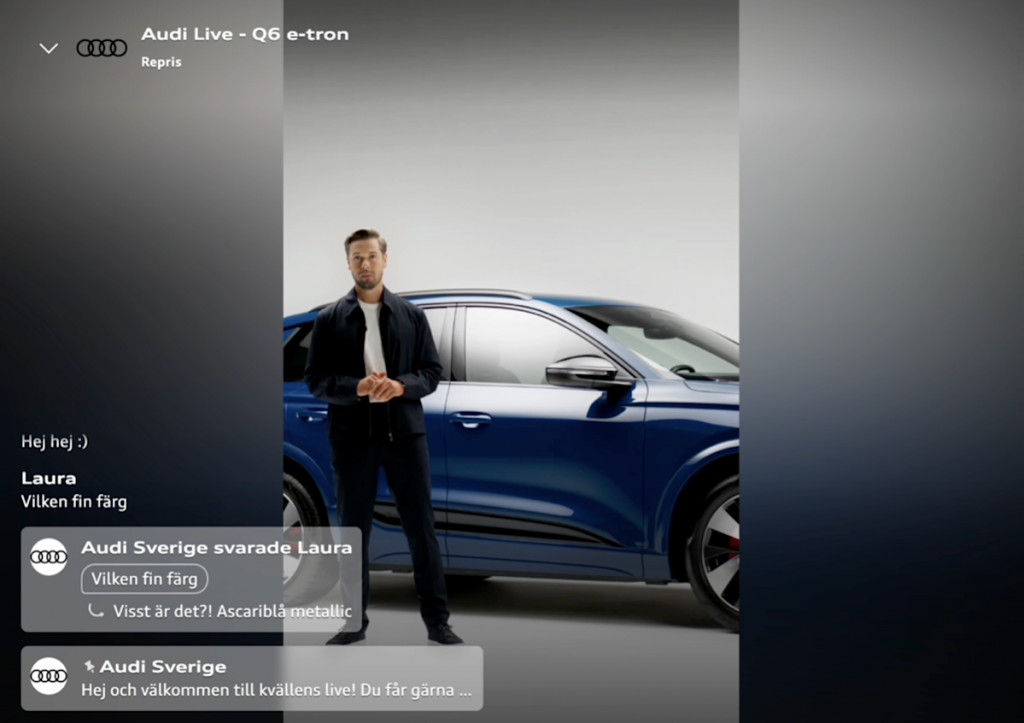vehicle purchasing with shoppable video

The traditional way to purchase a car – going to a showroom, speaking to the sales representative and running the rule over a showroom demo – is being challenged, especially by younger consumers. As social media and e-commerce grows, the attraction of buying a vehicle online, skipping a large portion of the in-person sales journey, has become appealing to a wide range of buyers.
Some industry experts predict up to 42% of sales will be online by 2026, growing to 56% by 2030. Alongside this 83% of buyers wish they could shop for cars online, 75% say video has influenced a purchase and 29% says they would now buy their next car entirely online.
OEMs such as Audi have adapted to this new way of selling by partnering with video commerce platform specialist, Bambuser. Since the partnership Audi has launched twenty new vehicles via shoppable video, and says it has seen an increase in customer interest and engagement.
We spoke to Maryam Ghahremani, CEO, Bambuser, and Pontus Lamberg, digital marketing manager at Audi Sweden, to learn more about the benefits of such new sales platforms.
Just Auto (JA): Who are Bambuser?
Maryam Ghahremani (MG): The company started in 2007, and it was the first company in the world to do a live stream from a mobile phone. This was before the iPhone was launched. They did the first live stream with a Nokia phone with no screen. The company really pioneered mobile live streaming since the early days. A lot of journalists were using the app to stream news from the field directly into the news desk.
We decided to pivot into live shopping because of three things. The first one was e-commerce. It had been static for 25 to 30 years. To begin, it was a picture, some text and a buy button. Then everything evolved to include shipments tracking, payments, peer recommendations and so on.
We decided that e-commerce was where we want to be, ensuring that how you present your product can be more educational, inspirational, immersive, and fun.
The second reason for the pivot was video. Today, 82% of all IP traffic in the world is video; the majority of what we do all day long is spend time watching videos of all sorts – watching news, talking to our loved ones, sitting in meetings, watching YouTube, and much social media is video content, of course. Based on that, we thought that if the Internet is becoming video, then commerce will, over time, adapt and become video also. Today though, if you look at e-commerce, it’s very, very static. It’s not video first at all.
The third reason was China. They are ahead of us between five and eight years when it comes to how they behave in digital world. They’re ahead of the world. We looked at China, and we said that let’s build something that works for Western markets.
Do you want to build your own blog website similar to this one? Contact us








